Drosera species from Australia & South-Africa
Most sundew species grow in tropical and subtropical climate in Australia with more than 160 species and South Africa with more than 20 species. The genus is very rich in growth forms. There are rosette plants with or without stem storage bulbs, dwarf plants, upright meter high branched plants, climbing plants and plants with runners. However, only a few species are shown here, but if the reader wants a complete overview of the Australian species the following three-volume work is recommended: Allen Lowrie 2013. Carnivorous plants of Australia.
Australian species
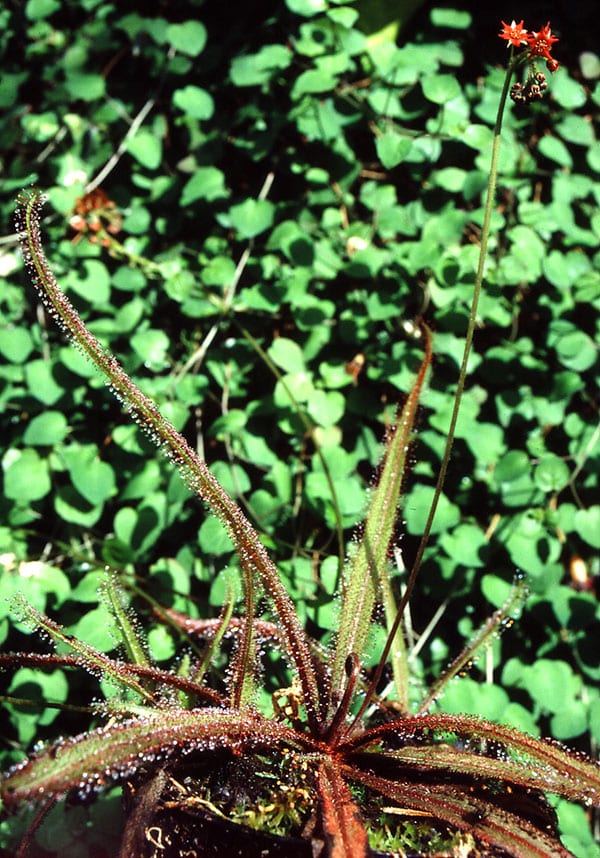
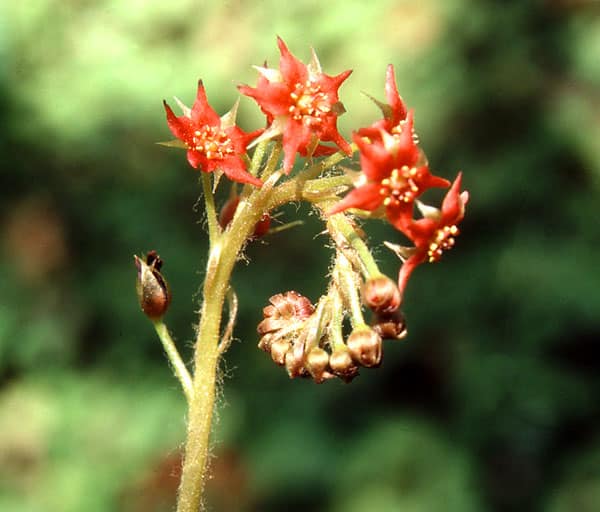
Drosera adelae is endemic to a small area in Queensland south of Cairns. It is a perennial rosette plant with up to 25 cm long leaves and read flowers. The flower stalk is hairy but without slime secreting tentacles. It often grows in sandy cracks in rocks, but can also be found in running water in the rainforest.
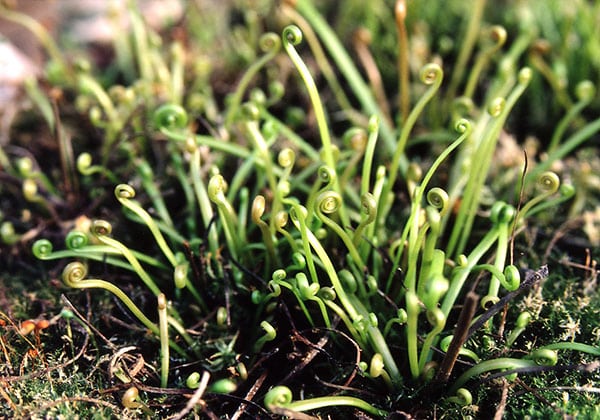
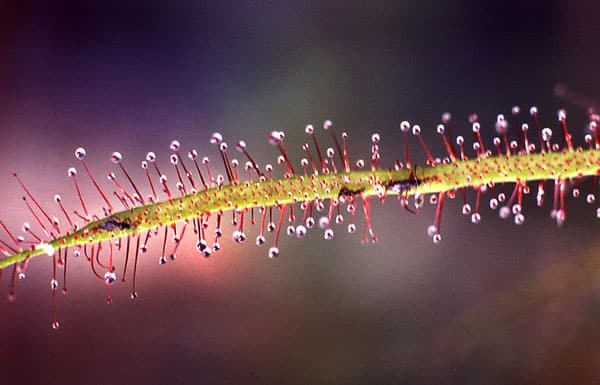
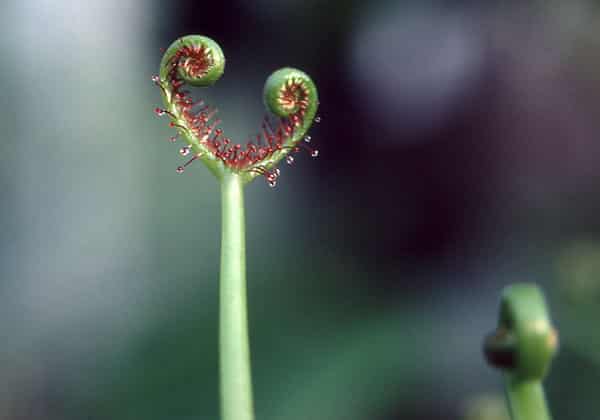
Drosera binata occurs in near coastal areas in East-Australia but is also present in the most southwestern Australia and on New Zealand. It is a 20-35 cm high perennial plant surviving the dry season by shooting from the roots. It is the only species with bifurcate leaves sometimes divided more than once. The leaf lamina is covered with long-stalked and short-stalked tentacles. During development the leaves are enrolled. The flowers are white. It grows primarily in sandy peat.
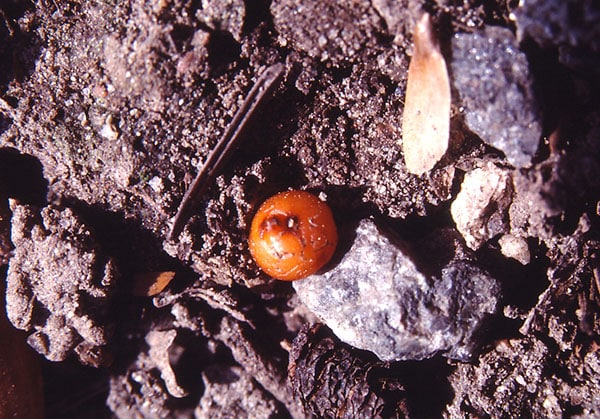
Drosera erythriza is endemic to SW-Australia. It shoots from a subterranean orange stem bulb and forms a rosette with four leaves on the soil surface. It often produces up to 12 cm long runners, which form a bulb at the apex. The inflorescence is up to eight cm high with white flowers. It prefers to grow in a deep layer of quarts sand on heaths or light-open forests, where it survives the dry season as a bulb. It is most willing to flower after a fire in the dry season.
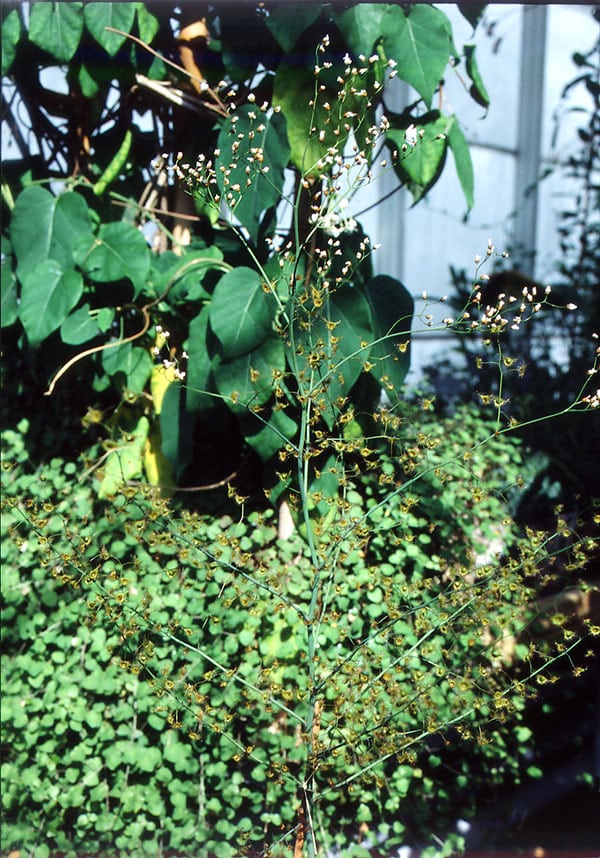
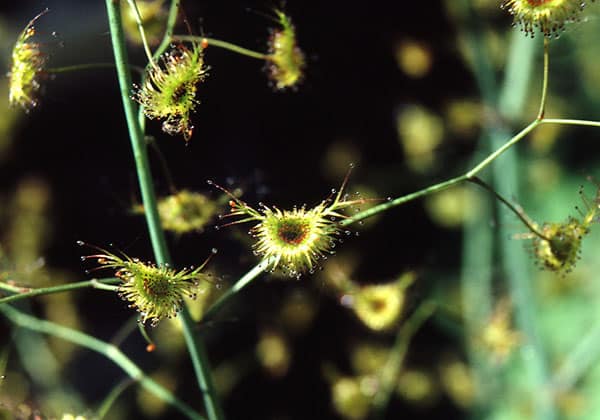
Drosera gigantea is endemic to SW-Australia. It shoots from a bulb as in D. erythrorhiza and forms a strongly branched plant which can grow to a height of one meter. The only one cm large traps are strongly concave with the adaxial side turned away from the stem. It grows in the periphery of swamps or on granite with standing water. It produces runners covered by thin short roots forming a more or less felted layer around the runner. The felted layer becomes a tube when the runner wilts. When the bulb germinates the stem grows up through the hollow tube like an Asparagus shoot. The flowers are white.
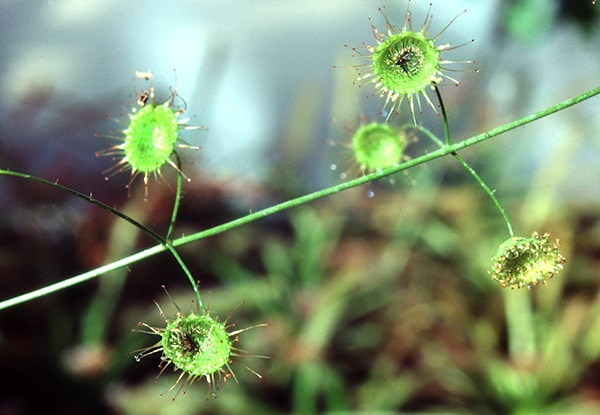
Drosera macrantha is endemic to SW-Australia. It is a bulb-forming climbing species which clings to other vegetation. The up to 90 cm long stem usually has whorled leaves with three leaves in a whorl. The lamina (trap) is maximum 5 mm in diameter and deeply bowl-shaped. It grows in sandy soil on heaths or in open woods. It survives the dry season as a bulb and the flowers are white.
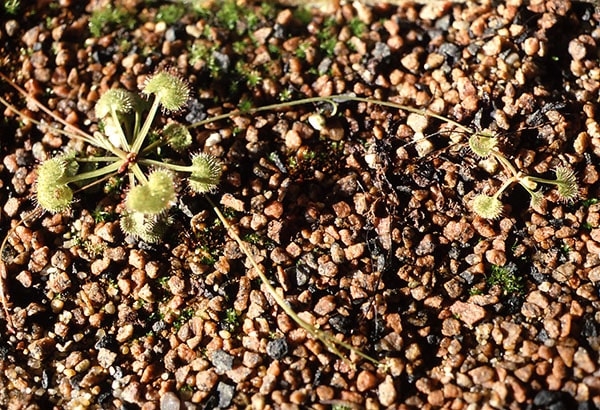
Drosera prolifera is endemic to a small area norths of Cairns in Queensland. It is a small perennial rosette plant with a few kidney-shaped leaves and long runners forming new rosettes. A rosette produces several inflorescences with red flowers. It may flower year round. It grows together with D. adelae in sandy rock crevices in the mountains or in running water in the rainforest.
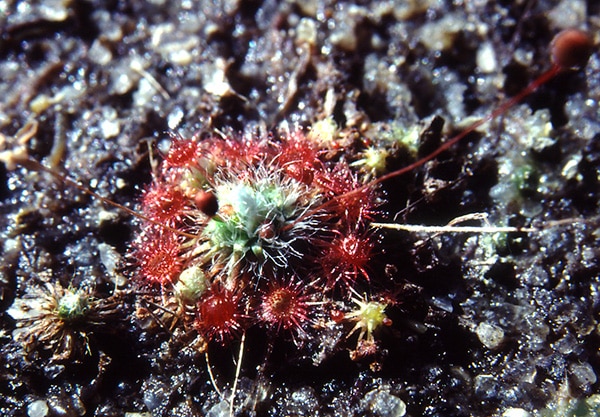
Drosera pygmaea grows relatively near the coast in Eastern Australia and in a small area in SW-Australia besides in Tasmania and New Zealand (same area as D. binata). It is a very small rosette plant about two cm in diameter. The flowers are white and usually with only four sepals and petals. It grows om sandy soil on sandstone cliffs and on the edge of sandy peat-swamps.
A few other Australian species are shown on the Danish page Carnivori på frimærker inclusive Drosera burmannii which has the fastest moving tentacles able to move 180° in less than one minute. (So far only in Danish).
South-African species
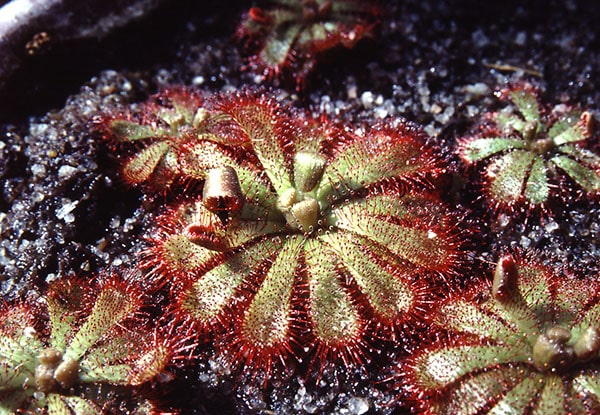
Drosera aliciae grows in the Cape Province and adjacent areas. The plant forms small tight rosettes up to five cm in diameter with tongue-shaped leaves. As in many other sundew species the tentacle heads become red of anthocyanine in strong light. The coloring plays a role in alluring insects. Several up to 30 cm long inflorescences with pink flowers are produced. The flowers only open shortly in full sun. The species is relatively easy to grow. It grows on humid peat containing soil and on mountains it occurs up to 2000 m. Notice the involuted leaf with prey and young leaves in the process of unrolling.



Drosera capensis is a perennial rosette plant with 10-15 cm long leaves from the Cape province. It has 1.5-2 cm large reddish flowers. Varieties with white flowers occur. It grows on waterlogged chalk free soil and it is easy to grow. It produces large numbers of very small seeds easy to spread, and therefore the species is invasive in several countries. See also the photo and description of the course of the catch under Trap function. On the lower right picture the fly has struggled its way towards the base of the lamina in order to get free and thereby it has activated nearly all tentacles. The tip of the leaf has begun to curl up shortly after the fly landed, but the process has probably stopped due to lack of stimuli from the fly in the area it has abandoned.
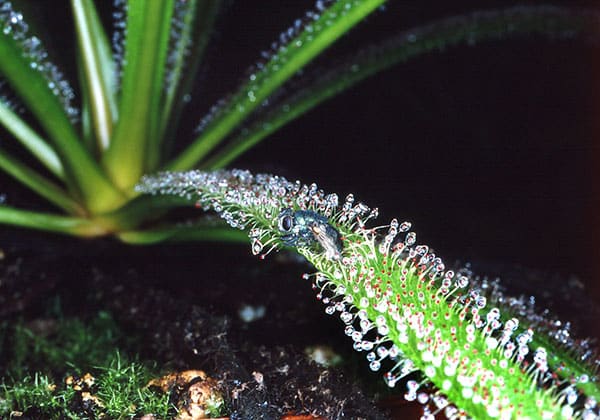
Drosera regia is endemic to a single valley in the Bainskloof Range in South Africa where only two population are known. Therefore D. regia is considered the most threatened sundew species. It is a perennial rosette plant, where the leaves can reach a length of 70 cm. The species has several relict-like characters among other things a lignified horizontal rhizome and undivided stigma, and molecular investigations show that some of these characters are shared with Dionaea, which indicates the two species are closely related from an evolutionary point of view. D. regia prefers permanent humid quarts sand mixed with peat soil. The flowers are reddish with 2-3 cm long petals.
H. S. Heide-Jørgensen, December 2021
Retrrn to Drosera main page

